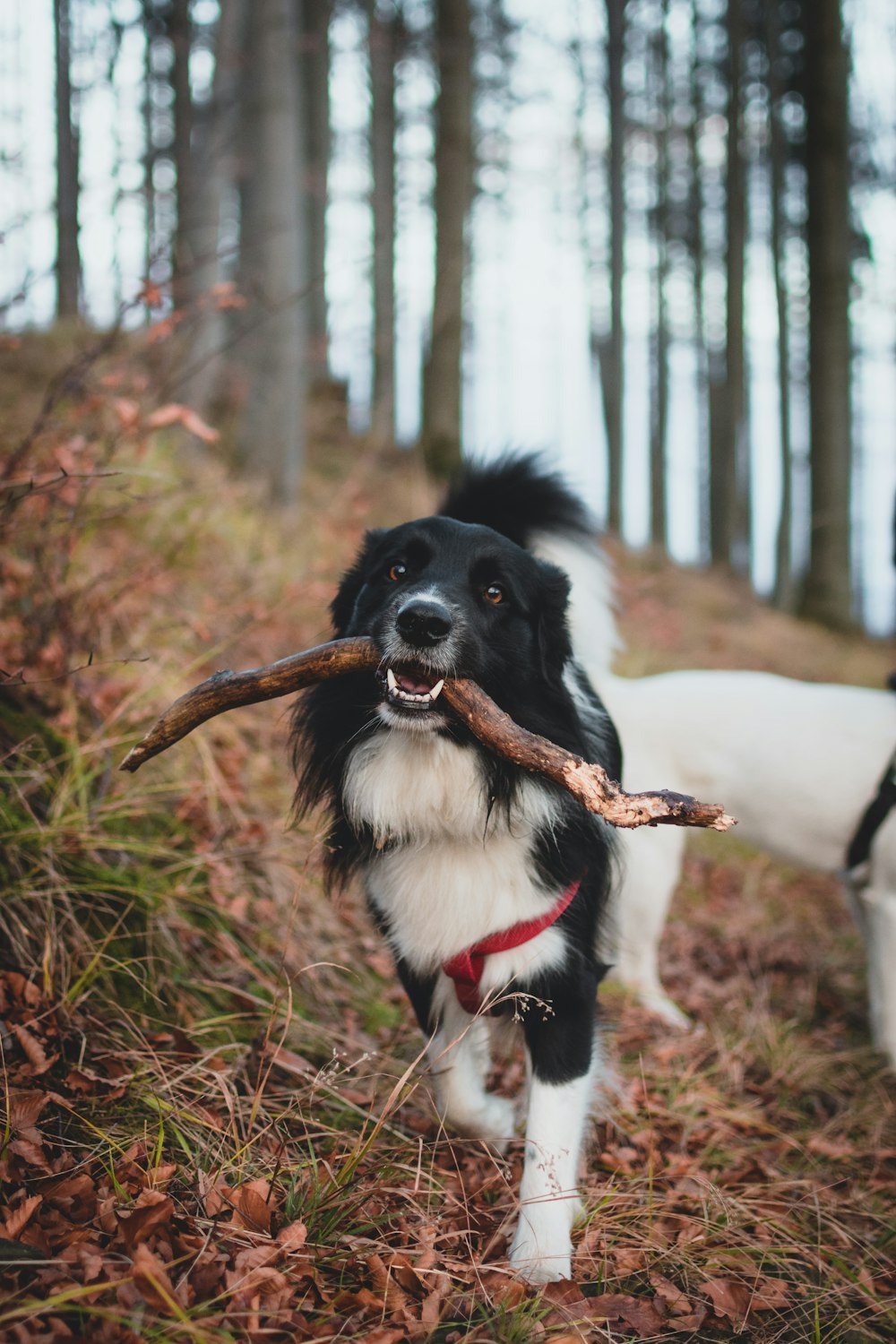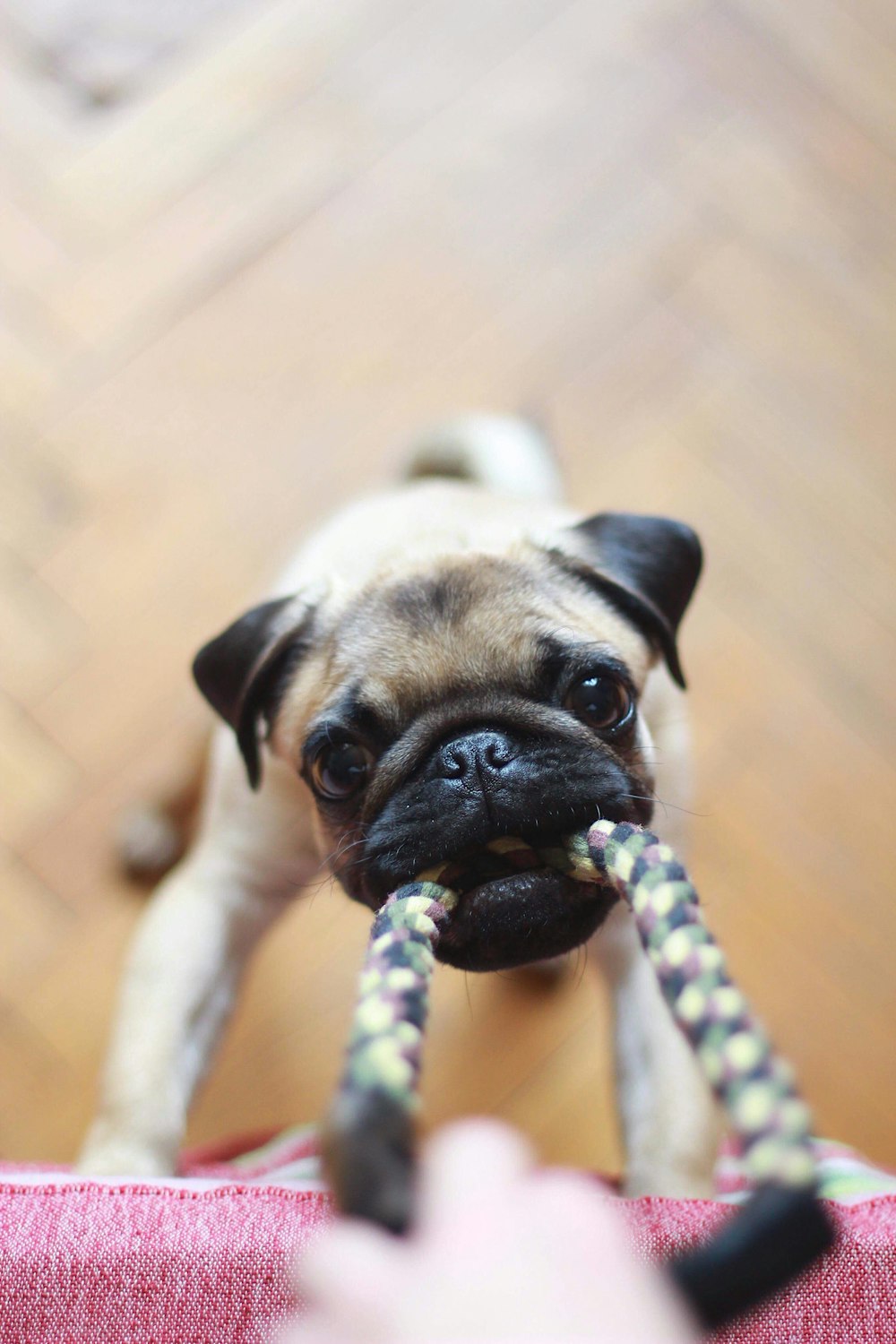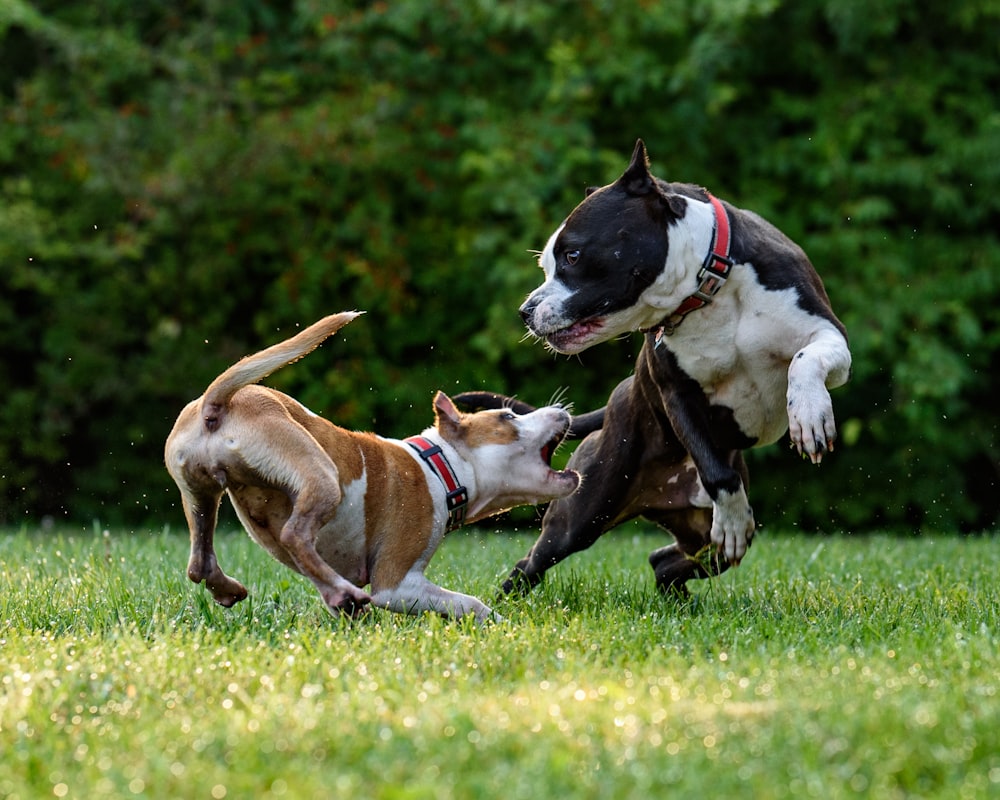Some dogs just don’t seem interested in exercising. Whether it’s old age, health issues, or plain laziness, sometimes a dog we think is lazy is really just unmotivated. Dogs may not enjoy exercising, but they all love fun. To trick your dog into engaging in exercise, sometimes you have to get a little creative and find a way to make physical exertion a game. Here are a few considerations to get your “lazy” dog up and moving. Here’s how to play with dogs.

Rule Out Medical Issues
First things first: when it comes to you getting to play with dogs, rule out any medical issues for your lazy pup. If your dog’s disinterest in physical activities is sudden, take them to a veterinarian to make sure there isn’t something medically relevant going on with your dog and their change in behavior. Any sudden change in a dog’s behavior should be treated with caution and examined by a veterinary professional. If you plan on starting a new exercise regime or activity, consulting your veterinarian is always a good idea.
A few medical issues associated with sudden laziness could include:
- Thyroid issues
- Arthritis
- Anemia
- Lyme disease
We often find that overweight dogs have thyroid issues that can be easily corrected with medication. Arthritis leads to musculoskeletal pain that makes exercise painful. Tick-borne diseases like Lyme disease cause extreme fatigue.
Modify the Activity To Play With Dogs
Once your pooch has gotten a clean bill of health from your vet, play and exercise activities should be catered to the needs of your individual dog. Not only should the physical activity be engaging and fun, but it should also take factors into account such as your dog’s age, weight, and size. For example, “low-rider” breeds like corgis and basset hounds are not well-suited to long jogs that can stress their delicate bodies.
New play activities should start slow. Just like with people, your dog doing too much of a new activity too quickly can result in injuries. If your dog isn’t very active, begin with low-impact activities, such as slow walks around the neighborhood or swimming, and work your way up to more rigorous activities.
Most importantly, play should be fun: if you notice your dog is not enjoying the activity, consider how you could modify your plan so they become excited to engage in the play.
Common Issues To Play With Dogs
Here are a few common issues when it comes to play with dogs and how you might go about addressing them. Keep in mind that not all play must be elaborate, sometimes playing with your canine companion involves a simple walk around the neighborhood.

Your Dog Hates Walks
Maybe your dog prefers to be sedentary or even sits down instead of walking around the block with you. No one wants to have to drag their dog down the sidewalk to get them to exercise or play.
Don’t force it. If you know your dog hates walks, trying to get them to exercise for 30 minutes this way is setting yourself up for failure and frustration.
Try to turn walks into a fun game and start out small. Take them out for a 5-minute walk to the end of the block and back. Here are some other tips to improve your walk:
- Use excited body language and voice to convey how much fun you’re both having.
- Use treats sparingly, if needed, to motivate them into following you.
- Try sudden changes in direction to keep their attention.
- Celebrate small victories with plenty of rewards of attention and praise.
- Let your dog sniff. While you may have places to be, letting them take in the sights and smells will increase their enjoyment.
- Try taking your dog for a walk in a new, interesting place like the park or beach.
- Put your distractions (i.e. cell phone) away and be fully present and engaged with your dog.

Your Dog Is Uninterested in Toys
Some dogs aren’t very motivated by toys. Maybe they weren’t introduced to toys when they were younger or they’ve become bored with the toys they have.
Play with dogs with toys can be excellent exercise for your dog, as they won’t view it as exercise. Plus, toys can facilitate both training and games, even in the same session. So how do we play with dogs with dwindling interest in toys?
Fixing this issue requires you to become your dog’s trainer: you need to teach (or re-teach) your dog that toys are fun. Here are a few recommendations to get your dog interested in toys:
- Buy a wide variety of toys to find what will interest your dog.
- Feed your dog out of puzzle-feeder toys.
- Put toys away when he or she isn’t using them.
- Designate some toys as “outside only.”
- Choose interactive toys you can use to play with dogs such as tug-of-war rope toys.
- Encourage play by getting excited and praising your dog for interacting with toys in any way.

Your Dog Does Not Play Inside
Bad weather, lack of time, or no fenced-in backyard can all contribute to your dog spending more time inside. Many people don’t realize that there are plenty of indoor activities you can play with dogs to get them mentally and physically engaged.
- Hide and Seek: While one person hides, another holds the dog in another room. Initiate the game by calling your dog. When your dog finds you, reward them with praise and pets.
- Hide Their Food: Let your dog hunt for his or her food by hiding it all over the house. Kibble can be placed under the corners of carpets, behind furniture, on shelves: anywhere your dog can easily access. Just remember where you hid the food in case your dog doesn’t find it all!
- Obstacle course: set up an obstacle course for your dog. Have them jump over chairs, crawl under tables, or run around pillars.
- Keep Away: have a catch with another person using one of your dog’s toys.
- Fetch: if you have a large room or long hallway, you can easily play fetch with your dog inside.
- Tug-of-war: tug-of-war is a great game that both you and your dog can use to exercise inside.

Your Dog Only Plays With Other Dogs
Some dogs only want to play with dogs. This can be a problem if your dog lives in a single-pup household. The solution: get your dog to play with you! The best way to get your dog engaging with you is to further develop your bond. Spend time with your dog to get to know what he or she likes. Walks and playtime are an obvious way to spend time together, but try adding picnics, errands to dog-friendly establishments, dog parks, or playdates with friends to your weekly schedule. Deepening your bond with your dog will have them playing with you in no time.

Exercise and Play For a Healthier Dog
Though we can’t stop our dogs from getting older, we can do our best to ensure they are at their optimum health and happiness in their golden years. Making sure our dogs play and exercise regularly is the best way to keep them happy and healthy throughout every stage of their life.

